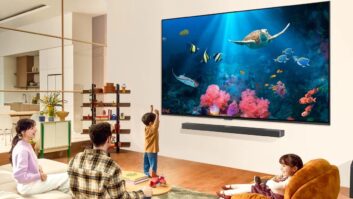A group of major consumer electronics retailers — including Best Buy, Circuit City, Radio-Shack and Sears — recently blasted the new digital TV/cable compatibility labeling agreement in comments to the Federal Communications Commission.
Taking exception to the terms “Digital TV-Cable Interactive” and “Digital TV-Cable Connect,” Circuit City asked the commission in a filing to consider modifying the agreement to make the terms clearer and more meaningful to general consumers, or to do away with labels altogether.
The retailer objected to the agreement’s focus on cable interaction and said it did not make clear how the two classifications of televisions would work with DVD players, digital VCRs, and other digital devices and interfaces.
Other retailers, as well as the Mass Retail Association and the National Retail Federation, joined Circuit City in its opinion.
The terms were the result of a compromise between the Consumer Electronics Association and the National Cable TV Association announced last month in response to FCC chairman William Kennard’s directive to settle disagreements between the industries to enable the promotion of DTV via cable and other platforms.
In response, CEA said the terms were voluntary incremental steps in formulating a still broader multi-industry agreement. Both CEA and the NCTA continue to work on names for digital cable set-top boxes and fully integrated digital TV receiver sets that won’t require an outboard cable tuner.
Meanwhile, in a related matter, CEA filed comments with the FCC on the digital television transition process, urging that free, over-the-air video programming remain the focus the initiative. The association said new services such as datacasting should be encouraged, but stressed that such efforts not interfere with the primary goal of providing free TV.
“Broadcasters should have the freedom to invest in and provide new services to viewers such as datacasting and interactivity,” said CEA president Gary Shapiro. “Indeed, our research shows consumer interest in these functions. But these potential new services must not prevent or inhibit consumers from receiving free, over-the-air programming in the digital age, nor should these services be used as a foil to push noncompatible changes to the DTV transmission standard or otherwise delay the transition.”
Shapiro’s remarks were directed in part to a group of broadcasters, including the Sinclair Broadcast Co., which wants the FCC to revisit the ATSC digital broadcast standard to include the COFDM modulation scheme along with the current 8-VSB standard.












